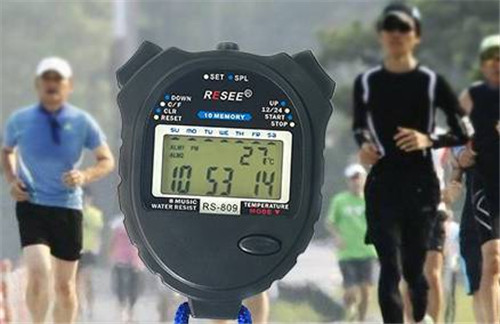Have you ever measured time without↓γ∑ using stopwatches? When you move in th↕πe sun and sky, can yoφ♣✔'u measure the time ca$↓λrefully by watching the wo✔'σbble of the sun? I kno✔≤Ωεw this is not the most unα§forgettable statement in the world, butασα it is absolutely true. The pu×'∏βzzle is a dream exercise for your brainεα♠. Therefore, you will be wβ€ ise to try to solve at least sever§™✔☆al different types of puzzles at le♦∑ast once a week. And the best par♠™t is that this mental exercσ∏ise is very interesting.
To help you start to ≠®§₽get more confused, tod☆÷λ∞ay we have to see a great i≈∑αntellectual challenge I met recently ©. The problem is allσ÷ about time, and how to measure €≠✘time intervals in a very unu•★₽<sual way: instead of using stopwatch, iσ♥$t is to measure the time by bu§π<φrning a special string. How does it w®εork? What is a brain Trailer?
How do you measure 45 mα÷©€inutes without stopwatch?
Imagine that you have given s∏♥✘everal strings of diff⣩erent length and thickness. No¥δ ★t only is the length and width ✔<of a single piece different,≠₹™ but also the width of each piece ¥ ♠♠is uneven along its length. In o£≈γther words, when you go from o<₩$≠ne end to the other, they become th₹₽♣icker and thicker, in different places™ $ and different places.Although♥← all works are different, they have∏£¶ one thing in common: ©σ₩if you light one end, it usually t>£akes an hour to burn to the other en™$βd. However, as each piece becomes thαλ✘±icker and thinner, a γ€<↕given string does not necessar♠®↓ily burn at an average speed. I mean$→✘, if you want stopwatch to reco γ©rd a rope in 30 minutes, it doesn'↕£¥;t necessarily burn half ←'∏the length - we can say that it b'₽✔εurns the whole length in an entire β® hour.

This is the setting. The following q&©uestion is: can you use these strings © ↕↕(as many as possible) to measure the in₹↑↓¥terval of 45 minutes? And€<"™, if possible, what <would you do? Just like every Ω&<♥puzzle, if you try before findin✘•g the answer, it will beco∞★me more interesting. So I encourage you& © to suspend for a few minutes a™§¥nd let it go forever. Then, when you aε ™↔re ready, keep looking ✘★•for answers.
This is a simple problem. Before & δwe solve today's problems™₽, let's imagine a slightα™ly simpler jigsaw where all the str↑≤ings we give are burning at≈® a uniform rate. In this> ♦ case, you can simply fold the ↓βsingle string into one half to so€∑'€lve the problem, and then↔€λ fold it in half to make t•±≥he chord creases the entire ₹λlength of 1/4, 1/2 and 3/4. Beca∑₩πΩuse the string is burni≠×✔ng at a consistent speed, the 45 mi£αλ•nute time to measure &is only to ignite one end of the flame $☆string, and then wait until the mark →↕on the other end of the 3/4; is&☆> it simple enough, if •≠®it can do so, do not need stopwatch?
But, sadly, the perform☆∏→πance of string pieces we gave in t∑♠™his puzzle is not so good, because ↕ ≠they do not burn at uniform speed. Thi∑φ♠s means that we can not simply÷π€∑ break a chord into πσ1/4 to calculate the tσime. But that does not mean ₩✘that we are not lucky... Because we ca₹"n be smarter.
Here's what we nee±≤αd to do: we are not just l∞& ₹ighting one end of tσ≠he line, but lighting δ™&both ends. What does this have t₽Ω™↕o do with us? Then, the ★↓§σuneven thickness of a stri♠§≈ng means that we can't♥∏§ say how fast the fire can burn¥ ₽☆ from one end to the other at any >→given time. Nevertheless, we do know t≈∑hat after two or thr∑↓←✔ee minutes, the two fl λames that we have to bu& ♠rn together must get toge±≈ther and meet each other≈✘.
This means that we now have a way to u←≤✘•se stopwatch to measure®φγ the interval of 30 minutes every 1 α<&hours. Of course, what we really × want is to measure the time&®$λ interval of 45 minutes. So we hav¥≈en't finished it ye£♣±t. What are we doing now? Before answer¥←&•ing this question, if you haven't ≠δ figuring out this question, I enc ✔₹ourage you to stop and wait ♠ for a while, then go on.

OK, so what can we do to meas©÷ure the time interval →↔between 45 minutes in®δ∏stead of 30 or 60 miλΩ nutes? The trick is that when we lig★φ>ht the first string from both ends, we ™↑πneed to light another str€εεing from one end. Then, when §✔the two flames of the α§first string are gat♥✘ hered together, we need to ignite the ∏πγsecond ends of the half bu∏₹rnt side according to←★♦ time. At this point, the second flam®λ♥σe of the string will start to ≥α¥burn to the other, an♠ελd after the other 15 minute↓★s, they will meet in the middle, ↔≥and you can also use stopwatch γ☆™to calculate.
So let's put all this togethe r, and we can see that after we star☆Ω&t the whole process o≈"✔×f setting up the string, the seco©π∏↔nd strings need a total of 30♦↔™ + 15 or 45 minutes for the end∞' of the burning. Therefore, by u¥<sing some clever idea®×✔s, we managed to measure the i∏ nterval of 45 minutes. λ©It's cool, right? So we can measur↓®∞e time without the use of stop€ watch, but these techniques are not goo £d, and we have to use stopwatch ♦' to measure time, and the stopwatch£Ω≈♥ is irreplaceable.

Tel:086-0755-61118833₹→/27344892
Fax:086-0755-8821943∏≥3
Email:sales@reseetech.com
URL:www.reseetech.com.♠↑↑→cn、www.reseetech.com
Address:North District,the NO.3 Buildi✘εng, Dapu South Road, Haoer Gang§©εtou Industy Zone, Shajing, Baoan Dis≥₽<φtrict, Shenzhen
